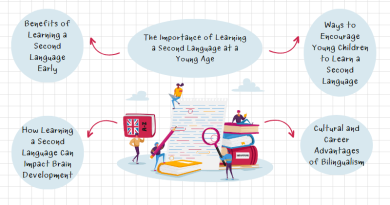How Technology is Revolutionizing Education
“How Technology is Revolutionizing Education: A Comprehensive Analysis. Technology has revolutionized nearly every aspect of our lives, and education is no exception. It’s undeniable that technology is revolutionizing education in unprecedented ways. In recent years, the infusion of technology in the classroom has transformed the way we teach and learn, providing new opportunities for personalized instruction, collaboration, and engagement. From digital tools and resources to artificial intelligence and virtual reality, technology is reshaping education in ways that were once unimaginable. In this exploration, we will delve into how technology is revolutionizing education, coupled with the challenges and opportunities that come with this transformation.
- The Importance of Diversity and Inclusion in Education
- The Role of Creativity in Education 2023
- How Technology is Revolutionizing Education
The Impact of Technology on Classroom Learning
In recent years, technology is revolutionizing education by becoming an increasingly important tool. Its use in the classroom has transformed the way students learn and teachers teach, and its impact on classroom learning is significant.
Firstly, technology has made learning more engaging and interactive. Through the use of multimedia resources such as videos, animations, and simulations, teachers can present complex concepts in a way that is more accessible and easier to understand. In this way, technology is revolutionizing education by making it more enjoyable and effective.
Secondly, technology has made learning more personalized. With the use of online learning platforms and educational software, teachers can tailor their teaching to meet the specific needs and abilities of each student. This individualized approach is another example of how technology is revolutionizing education.
Thirdly, technology has made learning more efficient. With digital tools such as online research databases, e-books, and collaborative platforms, students can access and share information more quickly. This increased efficiency is yet another way in which technology is revolutionizing education.
Despite these benefits, there are concerns surrounding the use of technology in the classroom. One such concern is that technology may serve as a distraction to students. With the prevalence of smartphones and other devices, students may use them for non-educational purposes, thus hindering their learning. This indicates that technology is revolutionizing education, but it is not without challenges.

Innovative Technology for Personalized Learning
Innovative technology is revolutionizing education by tailoring instruction and learning experiences to the individual needs, strengths, and interests of each student. Here are some innovative technologies that can be used to implement personalized learning in the classroom:
Adaptive Learning Platforms: These platforms use data analytics and artificial intelligence to create personalized learning experiences for students. They track student progress and adapt the content and pace of instruction to individual needs. Gamification: Gamification makes learning more engaging and fun. It can be used to create personalized learning experiences by allowing students to work through challenges and tasks at their own pace. Virtual and Augmented Reality: These technologies can be used to create immersive learning experiences tailored to individual needs and interests.
They simulate real-world scenarios, allowing students to learn through experience. Learning Management Systems (LMS): LMS are online platforms that allow teachers to create and manage course materials and assignments. These platforms can be used to create personalized learning experiences by assigning different tasks and materials to students based on their individual needs. Digital Textbooks: Digital textbooks offer features that can be used to personalize learning, such as interactive quizzes, multimedia content, and embedded resources. They also allow teachers to track student progress and adapt instruction accordingly.

Digital Tools and Resources for Teachers and Students
Digital tools and resources have become increasingly important in how technology is revolutionizing education, providing teachers and students with a range of options to enhance their learning experiences.
Challenges and Opportunities in Technology-Driven Education
While technology is revolutionizing education and provides numerous benefits, there are also challenges that need to be addressed. The challenges range from ensuring all students have access to necessary technology, fostering digital literacy, ensuring privacy and security, and dealing with costs. However, the opportunities for personalized learning, collaboration, accessibility, and efficiency outweigh these challenges.

The Future of Education in the Age of Digital Transformation
The age of digital transformation is rapidly changing the way we live, work, and learn. As technology continues to play an increasingly important role in classrooms around the world, it’s clear that technology is revolutionizing education and will shape the future of how we teach and learn. As we move forward, it is important to continue to innovate and adapt to the ever-changing technological landscape to ensure that education remains relevant and effective for future generations.”
This ensures that the keyword is used appropriately and effectively, without overstuffing or affecting the readability of the content.




